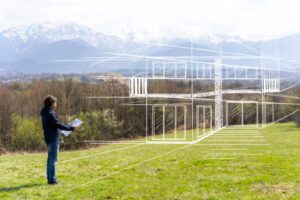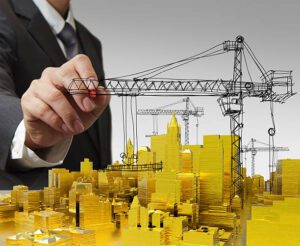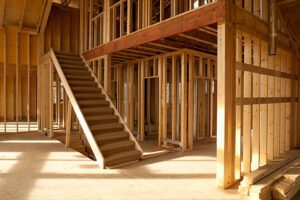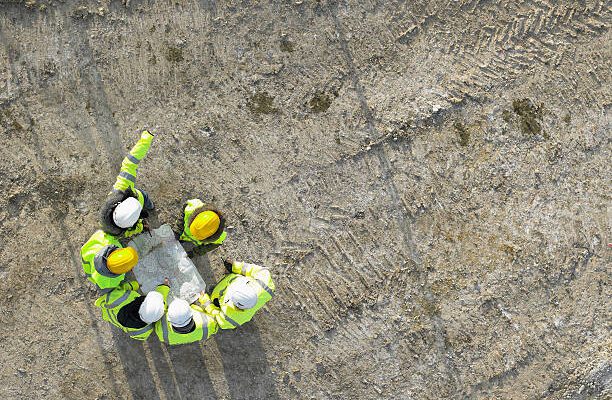Building a business facility entails considerably more than simply assembling building components. In actuality, the construction phase of the project is just one tiny stage. Prior to design and construction, planning is essential for avoiding problems before they develop.
Construction management experts recognize the importance of these planning procedures and make the most of them to minimize issues that may arise throughout the construction project. After the building is finished, the procedure is continued to make sure it meets the client’s expectations and the law. Let’s go through the construction process step by step.
Finding location
 (Photo from iStock)
(Photo from iStock)
In real estate, the cost of the project is significantly influenced by location. The cost of the property and subsequent building is heavily influenced by its location. Land prices for construction are higher in high-demand locations. But these locations might be perfect for the building and the businesses that will occupy it.
The location chosen for the building must be easily accessible to users. Customers and staff must be able to access the area with ease, especially for establishments that offer in-person services, such restaurants or the offices of medical specialists.
For the kinds of construction that are allowed, several cities have rigorous zoning regulations. Therefore, learn about the permitted building kinds before buying the property and beginning construction. Some real estate contracts have provisions that ban new construction.
In situations involving environmental preservation, these bans can be either temporary or permanent. A protected plant, animal, or habitat, for example, may be present on a site and must be preserved from development. A brief suspension of construction could give the town or city the time it needs to approve the design and make sure any adjacent people who might be impacted are on board with the project.
Setting budget
The first stage in generating a construction budget is to understand the expenses of various building structures across the country. The price per square foot of a new commercial building is impacted by its size and location. In New York City, for example, the price per square foot for a single-story commercial structure is from $373 to $448, while that for a high-rise ranges from $854 to $1,026. A high-rise building in Los Angeles typically costs between $458 and $688 per square foot, compared to $327 to $395 per square foot for a single-story commercial structure.
Predesign-phase
 (Photo from iStock)
(Photo from iStock)
Due to the fact that both phases entail defining the project’s expectations and goals, several pre-design phase steps also appear in the development and planning phases. Some may schedule the meeting between the architect and general contractor at the planning stage, while others may wait until the pre-design stage. Some people regard the design phase to be the second step of the commercial building development process, integrating pre-design and planning into a single stage.
The design-phase
In order to verify the building’s structural integrity and code compliance throughout the commercial construction design phase, precise blueprints and drawings of the structure are required. The plumbing and HVAC system, as well as other internal building structures, are verified by a mechanical engineer.
Structural engineers examine the designs for structural integrity. Electrical engineers design the complete electrical system of a facility. Parking lots and linkages to the neighbourhood infrastructure are designed by civil engineers. The bulk of the construction project can start after this stage.
Pre-construction phase
 (Photo from iStock)
(Photo from iStock)
Pre-construction is the stage of building a business structure where the most documentation is dealt with. Your project must obtain the necessary licenses and insurance for those on the site during this phase. In order to make sure the procurement phase adheres to your budgetary goals; you will also collect vendor bids during this step.
The procurement phase
The procurement step is critical to keeping the project on budget. However, the calibre of the service providers and the materials utilized in construction are important as well.
As a result, you must strike a balance between staying within your budget and utilizing long-lasting building materials. Similarly, you should select subcontractors with a proven track record of success. A general contractor frequently handles the procurement stage. To avoid problems caused by misunderstandings or a lack of understanding of expectations, open communication is essential.
Construction phase
Everything done thus far serves to set up the actual construction process. The project will include a sizeable chunk of site preparation for the structure. As a result, builders should not scrimp on quality during this initial stage.
Construction
 (Photo from iStock)
(Photo from iStock)
The site is now ready to start the commercial construction process. The phase of construction that requires the most care is the building’s erection. Concrete is first poured to build the foundation. The frame includes the inner elements of the building that provide structural support.
Post-construction phase
As part of the post-construction process, the general contractor must accompany you on a tour of the building. Throughout this voyage, you will evaluate the project’s quality. If you or the other inspectors discover any faults or signs of inadequate work, put them on a punch list. Additionally, it permits a formal building inspection to authorize occupation.




